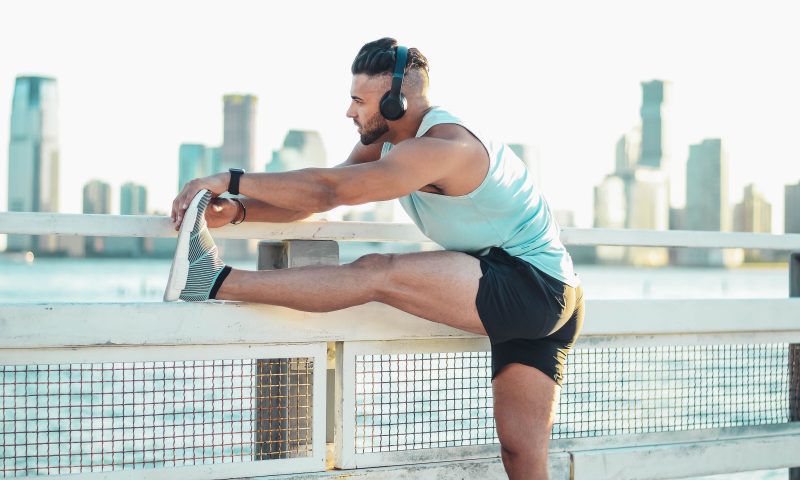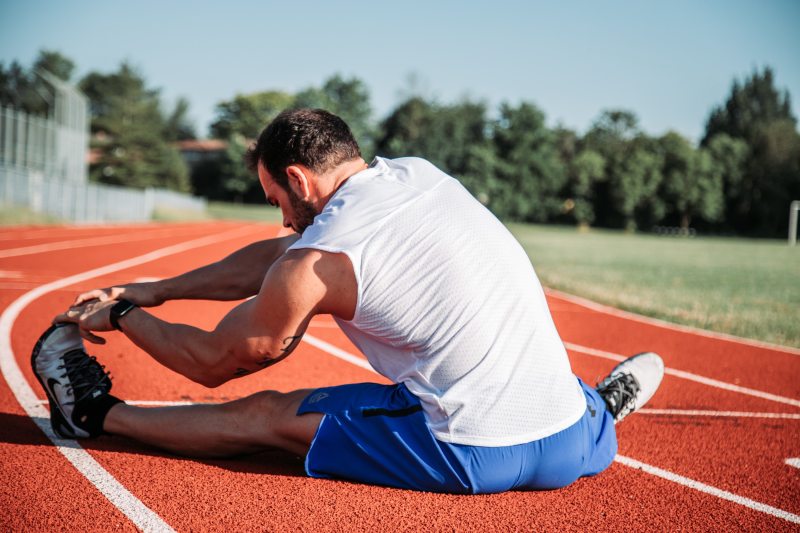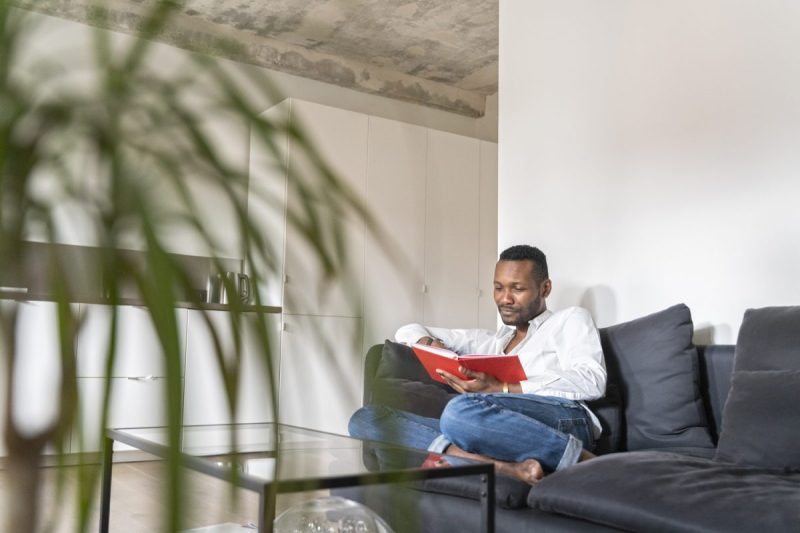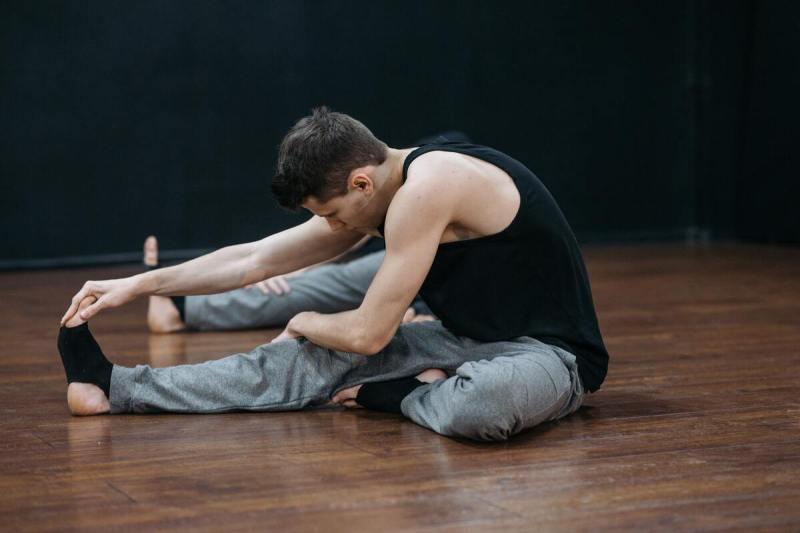
The hamstring muscles are located at the back of the thigh and are used for everyday activities such as walking, running, and climbing stairs. This muscle group, which consists of three separate muscles, also helps the legs perform other movements, such as squatting.
It is, therefore, important to keep the hamstrings from tightening or weakening. The best way to accomplish this is by keeping the hamstrings flexible. Even a regular hamstring stretch can prevent muscle pain, tightness, and muscle pulls from occurring.
Tight or pulled hamstrings can decrease mobility and increase discomfort even without doing any rigorous activity. This is why incorporating hamstring stretch exercises into a workout routine can help alleviate or prevent problems from developing in these crucial muscles.
Whether you’re an athlete aiming to enhance performance or someone looking to improve daily flexibility, hamstring stretches can help make a positive impact on daily leg performance.

Signs you have tight hamstrings
Tight hamstrings are quite common, and many individuals will experience them at some point. Some warning signs to look out for include the loss or limitations to the range of motion the legs can perform. Even a feeling of resistance can be experienced when simply trying to extend a leg fully.
Other more obvious signs include discomfort and pain when performing everyday activities such as walking. Discomfort levels usually increase further still with more vigorous exercise like gym workouts or playing sports like soccer.
Even lower back pain can be attributed to tight hamstrings, usually because tight hamstrings can pull on the pelvis and cause tension in the lower back. If touching the toes is troublesome, then tight hamstrings can be the cause of this as well.

What causes tight hamstrings?
Sedentary lifestyle
Staying active does not only help to boost fitness, burn calories, and decrease body fat, but it also helps to keep muscles loose and strong.
A sedentary lifestyle can be attributed to many things, such as desk jobs, health problems, and age. But over time, inactive muscles can tighten, shorten and weaken, leading to pain and discomfort, which can become another barrier against becoming active.
Muscle imbalances
Workouts should target all muscles and not just certain muscle groups because the body needs to be balanced. All muscles should be given equal attention so that they can work in harmony with each other.
Strong quads and weak hamstrings can cause imbalances in the thighs. Weak hamstring muscles can overcompensate and pull, leading to injury and tightness. However, if the quads and hamstrings are of equal strength, they can work together properly because they work with each other instead of the opposite.
Lack of stretching
Stretching is important before and after exercise; sometimes, these stretching exercises are referred to as warm-ups and cool-downs. If the hamstrings have not been properly prepared for a period of activity, then their range of motion and flexibility may not meet the demands of the activity they are expected to perform, resulting in tightness and even injury.

5 stretches for tight hamstrings
1. Seated hamstring stretch
A seated hamstring stretch is a gentle exercise that can help relieve tightness in the hamstrings. It is safe to do, especially for those with balance issues, as it is done seated.
Instructions:
- Sit on the floor with your legs extended straight in front of you.
- Gently lean forward from your hips, reaching towards your toes.
- Keep your back straight and avoid rounding your spine.
- Hold the stretch for 20 to 30 seconds while breathing deeply.
2. Standing hamstring stretch
The standing hamstring stretch is another easy-to-perform exercise that can help keep the hamstrings loose and flexible. If back pain is an issue, then this stretch is more back-friendly than a seated stretch because you do not have to lie down.
Instructions:
- Stand up straight in front of a chair.
- Place one foot on the base of the chair with toes pointing upwards.
- Make sure this leg is straight and not bent at the knee.
- Bend forwards from the hips and place both palms on the shin of the extended leg. Hold for ten seconds.
- Slowly return to the starting position.
- Repeat with the other leg.
3. Wall hamstring stretch
The wall hamstring stretch involves lying down, so a comfortable gym mat and even a pillow can be used for ultimate comfort. It is a gentle exercise that can help with hamstring tightness and even injury.
Instructions:
- Lie on a mat and support your head on a pillow.
- Make sure that when you bend your knees, your feet can touch the wall in front of you.
- Keep one leg bent at the knee with the sole of the foot on the floor.
- Raise the other leg until it is straight and the heel is in contact with the wall.
- Push the foot downwards until your leg is straightened and the toes are pointing away from the wall; this should create a stretch in the hamstring.
- Hold for 30 seconds and repeat with your other leg.
4. Lying hamstring stretch
The hamstrings can also be stretched and loosened in a lying position without a wall. This stretch should be performed using a comfortable padded gym mat to prevent soreness from developing in the neck and back.
Instructions:
- Lie on your back with your legs extended until straight, flat on the floor. Your arms should also be straight and by your sides.
- Slowly raise one leg as high as possible, ensuring it is straight at the knee. The other leg should remain straight too, but always in contact with the floor.
- Support the raised leg with both hands placed at the back of the thigh or calf.
- Pull your leg towards your stomach until you feel a slight hamstring pull.
- Hold the stretch for ten seconds, then return to the starting position.
- Repeat with the other leg.
5. Dynamic leg swings
Dynamic leg swings can ease muscle cramps and tightness in the legs. They are particularly useful for tightness in the upper leg and hips and can be a helpful warm-up before a run.
Instructions:
- Stand up straight beside a sturdy support such as a chair.
- Grip the support with one hand to aid your balance.
- Swing one leg forwards and backward while keeping the back and neck straight.
- Bring the foot to waist height on each swing with both forward and backward motions.
- Side swipes can be added to this routine, where the legs are swung at an angle.
- Perform ten swings on each leg to stretch the hamstrings adequately.



